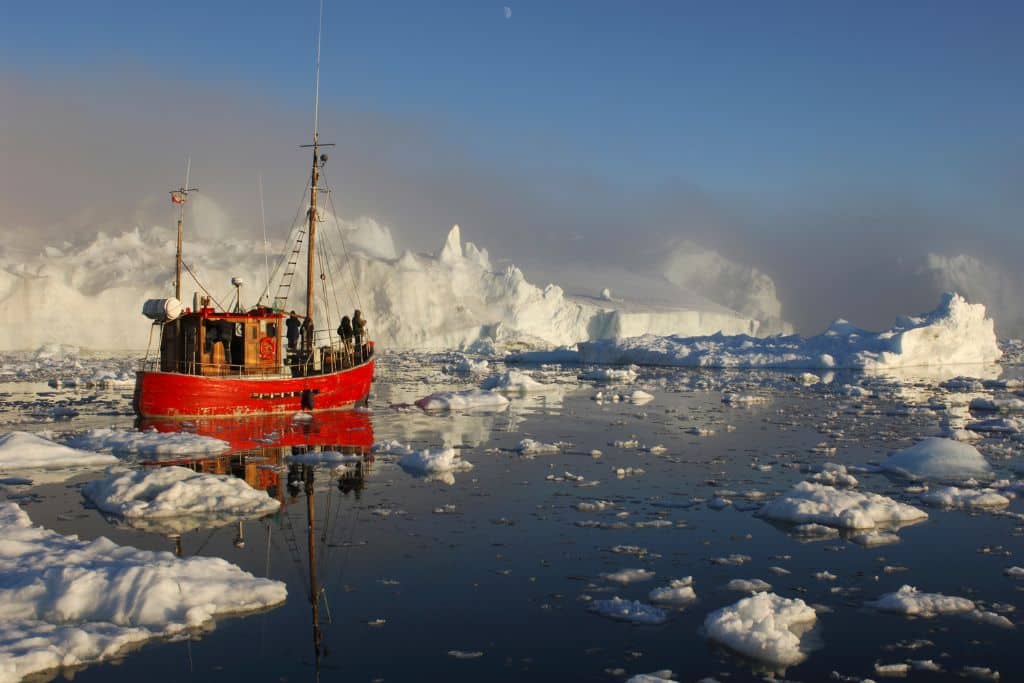A new study revealed the alarming retreat of Greenland’s ice sheet in the past four decades, which has seen a loss of at least 1 trillion tons more than previously estimated, warning of the implications for global ocean currents and rising sea levels.
—
Greenland’s ice sheet is seeing unprecedented melting, raising concerns about the potential collapse of vital ocean currents and its impact on global sea levels, according to a new study.
For decades, nearly every glacier in Greenland has experienced significant ice loss due to global warming. Traditional measurement techniques, such as gravity data and ice sheet height, have accurately captured the ice loss that contributes to rising sea levels. However, these methods fail to account for the retreat of glaciers located mainly below sea level in Greenland’s narrow fjords.
To fill this knowledge gap, scientists at NASA’s Jet Propulsion Laboratory turned to manually- and AI-derived satellite images to track Greenland’s glaciers’ positions every month between 1985 and 2022. The analysis revealed that the ice lost in this timeframe has been underestimated by 20%, or about 1,000 gigatons (1 trillion metric tons), due to the overlooked retreat around Greenland’s perimeter, also known as calving.
Dr. Chad Greene, the lead researcher behind the study published Wednesday in the scientific journal Nature, stressed the magnitude of the changes observed. “The changes around Greenland are tremendous and they’re happening everywhere – almost every glacier has retreated over the past few decades,” he said.
Consequences
Greene explained that the influx of freshwater from melting ice into the North Atlantic Ocean could weaken the Atlantic meridional overturning circulation (AMOC), a crucial system of ocean currents that acts as a conveyor belt, redistributing heat throughout the Earth’s climate system by bringing it from the tropics in the Southern Hemisphere all the way to Greenland and carrying cold water back south.
“It makes sense that if you dump freshwater on to the north Atlantic Ocean, then you certainly get a weakening of the Amoc, though I don’t have an intuition for how much weakening,” he said.
While the flow has already been reduced by about 15% in the last five decades, a weakening of 24% to 39% is expected even before the tipping point is reached, something that could happen as early as in 2100. A study published in 2021 found that AMOC is already at its weakest in over 1,600 years, a warning sign that a crucial tipping point may be reached sooner than expected.
Indeed, scientists suggest that a partial collapse of this system could plunge Europe into the Ice Age. This happened once before, around 12,000 years ago. As Greenland melted waters flew into the North Atlantic Ocean, AMOC was brought to a virtual halt. This caused Europe and North America to become much colder and resulted in a global cooling of more than 10C (18F) that lasted for 1,200 years.
A research published in July 2023 suggested that the AMOC could collapse around mid-century under the current emissions scenario, challenging previous findings of the International Panel on Climate Change (IPCC), which in the recently published Sixth Assessment Report (AR6) suggested a collapse of AMOC in the 21st century to be very unlikely.
Additionally, further predicted loss of Greenland’s ice sheet has the potential to contribute 1-2 meters to global sea level rise. And while the glaciers analysed in the study were mostly below sea level, meaning that the lost ice was replaced by sea water without any direct impact on sea levels, scientists remain worried. As Greene put it: “These narrow fjords are the bottleneck, so if you start carving away at the edges of the ice, it’s like removing the plug in the drain.”
You might also like: The Tipping Points of Climate Change: How Will Our World Change?


















